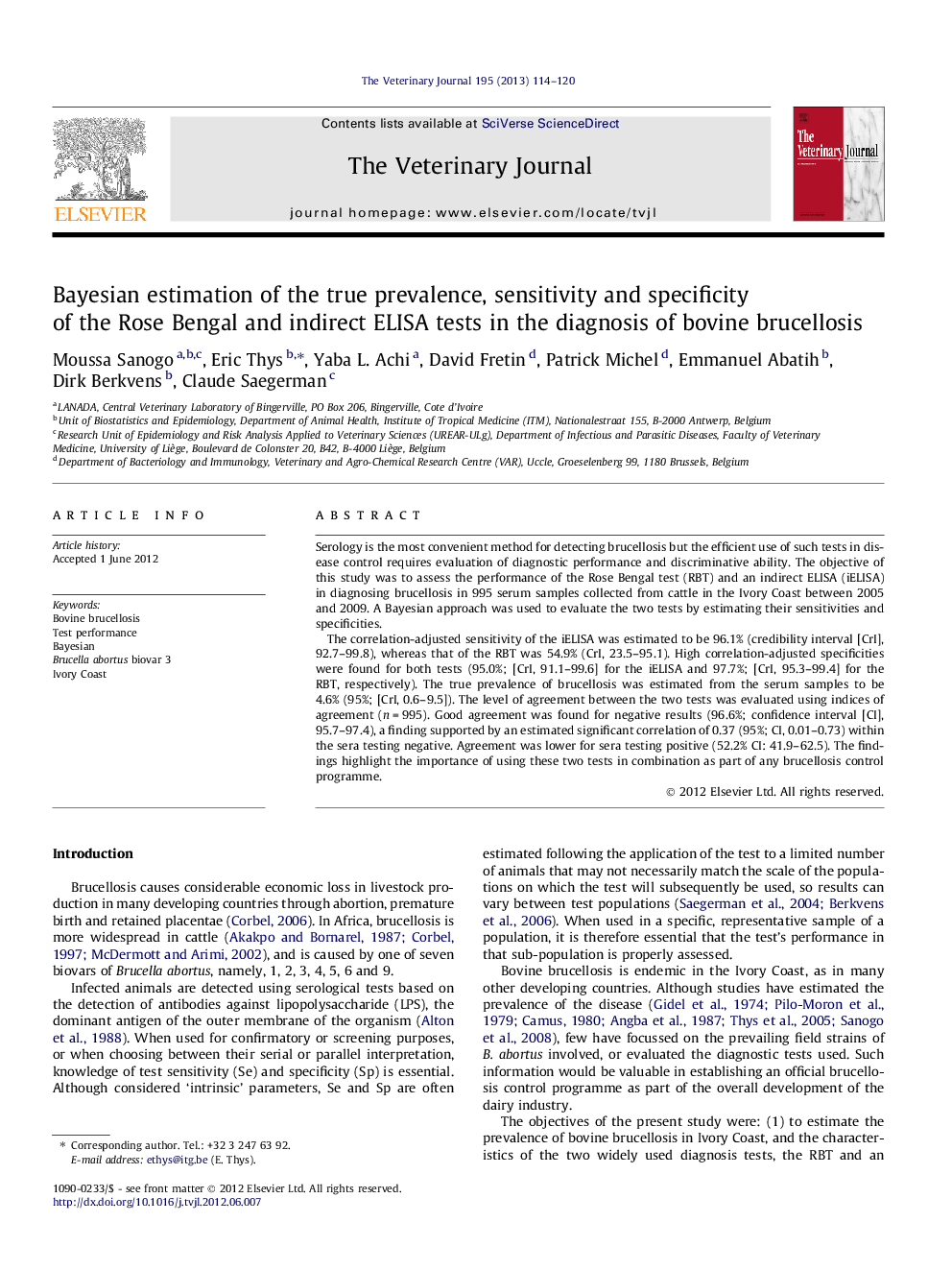| Article ID | Journal | Published Year | Pages | File Type |
|---|---|---|---|---|
| 2464199 | The Veterinary Journal | 2013 | 7 Pages |
Serology is the most convenient method for detecting brucellosis but the efficient use of such tests in disease control requires evaluation of diagnostic performance and discriminative ability. The objective of this study was to assess the performance of the Rose Bengal test (RBT) and an indirect ELISA (iELISA) in diagnosing brucellosis in 995 serum samples collected from cattle in the Ivory Coast between 2005 and 2009. A Bayesian approach was used to evaluate the two tests by estimating their sensitivities and specificities.The correlation-adjusted sensitivity of the iELISA was estimated to be 96.1% (credibility interval [CrI], 92.7–99.8), whereas that of the RBT was 54.9% (CrI, 23.5–95.1). High correlation-adjusted specificities were found for both tests (95.0%; [CrI, 91.1–99.6] for the iELISA and 97.7%; [CrI, 95.3–99.4] for the RBT, respectively). The true prevalence of brucellosis was estimated from the serum samples to be 4.6% (95%; [CrI, 0.6–9.5]). The level of agreement between the two tests was evaluated using indices of agreement (n = 995). Good agreement was found for negative results (96.6%; confidence interval [CI], 95.7–97.4), a finding supported by an estimated significant correlation of 0.37 (95%; CI, 0.01–0.73) within the sera testing negative. Agreement was lower for sera testing positive (52.2% CI: 41.9–62.5). The findings highlight the importance of using these two tests in combination as part of any brucellosis control programme.
